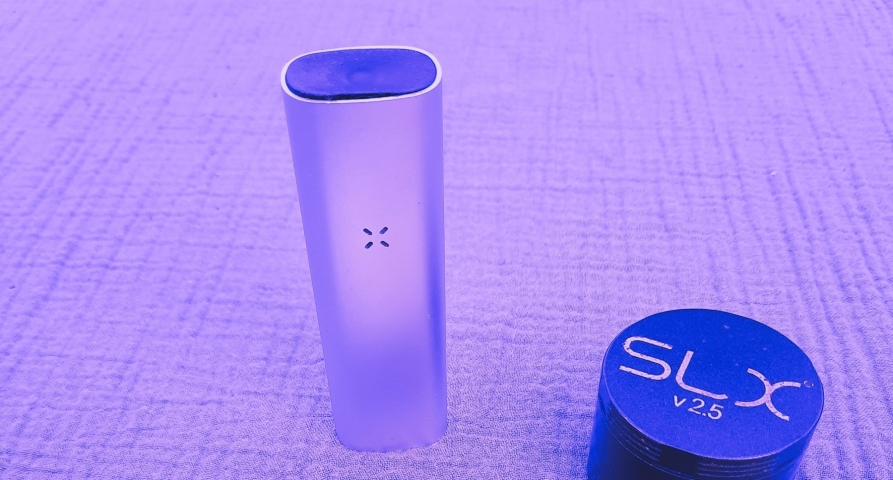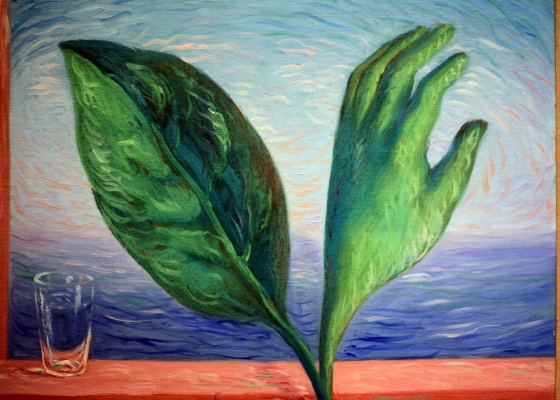Cannabis as (self) medication
I am thankful that I am healthy and vital outside of migraine. Through my work I have often come into contact with people who use cannabis as a medicine. To replace painkillers and antidepressants. I myself consume cannabis for my well-being, I feel good about it. I am therefore against the illegality of the plant! Especially because the mind-numbing drugs such as alcohol and tobacco are the only regulated recreational drugs on the market.
Cannabis is not a panacea but a cure for the people. Until about 150 years ago, there were countless folk remedies for all sorts of ailments. With the rise of the pharmaceutical industry these have almost disappeared. Nowadays more and more people are becoming more aware about their health and with the increasing health costs more and more people see the positive effects of cannabis. The benefits of well-being and improving the quality of life are of great importance to me.
Because cannabis is illegal, it is difficult to obtain clinical evidence. Nevertheless, more and more scientific studies are coming to prove the medicinal effects of cannabis. Stories of many patients with different conditions and pathologies where the consumption of cannabis has a positive influence. Always consult and discuss the use of cannabis in self-medication for serious conditions with your doctor. No doctor can say that cannabis is harmful in itself, especially when taken orally or with a vaporizer. Any smoke is poisonous so try to avoid it, especially tobacco smoke. Cannabis itself is not toxic!
I myself benefit a lot from cannabis against my migraine. By consuming it my attacks are less severe and less frequent. My mother (77) also benefits a lot from her self-medication. She uses cannabis ointment to replace a prescribed ointment that has multiple side effects and cannabis oil for a better night's sleep. Our daughter has had small spots of psoriasis since childhood, my cannabis oil is less harmful and works better than the medicine from the pharmacy. We have discussed all this with our family doctor.
Here are some ailments and conditions where scientific evidence shows the positive aspects of cannabis.
Nausea
One of the most researched properties of cannabis is that it relieves vomiting and nausea. This is very valuable for patients undergoing chemotherapy.
Eating disorders
Anyone who has blown a joint can still remember the eating kick. cannabis stimulates the appetite. The psychoactive substances in cannabis reduce feelings of depression and anxiety.
Arthritis
Many patients say they benefit from the treatment of arthritis. Traditional medications against arthritis are increasingly linked to stomach disorders. This is not known about cannabis.
Autoimmune diseases
Cannabis has anti-inflammatory properties. Because of this it has the ability to suppress immune function and can calm a hyperactive immune system. So that patients suffer less from their ailments.
Migraine
More and more studies confirm that cannabis has a beneficial effect against headaches and migraines. I myself can confirm this. Already in the early nineteenth century tinctures of cannabis were made against headaches.
Diabetes
Diabetes brings imbalance in the body, cannabis helps to stabilize this. Patients with both type 1 and type 2 claim to benefit greatly from consumption. There is more and more evidence for this.
Depression and anxiety
Cannabis makes you happy. Although people with depression have to watch out by consuming Cannabis. However, studies have shown that microdosing, consuming very small amounts of cannabis reduces feelings of anxiety and depression.
Healthier alternative to cigarettes and alcohol
Feeling just as good and happy is nothing wrong, even more so it contributes to your well-being. Legal stimulants are much more harmful.
Clean, organic cannabis
I think all cannabis should be clean and free of pesticides, fungi or vermin, but with cannabis for medicinal applications this is especially important. Patients are often already weak and have low resistance. Consuming contaminated cannabis is dangerous and can be counterproductive. There is one company in the Netherlands that produces medicinal Cannabis that is available on prescription from pharmacies. This producer irradiates his cannabis with gamma radiation. The company claims that the irradiation does not have any adverse effects on the cannabis, but from my own experience and as a cannabis lover I can tell you that this is often not tasty cannabis. Because most cannabis from a coffee shop is grown illegally on a large scale, much of this cannabis is contaminated. This is the result of illegality and you can't charge a coffee shop owner. It is also not (yet) allowed in the Netherlands to test the quality of cannabis.
If you grow cannabis yourself you know what you have. You can experiment with different types of cannabis to determine which one is best suited for your condition. This way you can also determine whether you would benefit more from a strain with a high CBD content, a strain with a high THC content or a 1:1 CBD-THC strain. Nowadays there are more and more strains with strong terpene profiles. The influence of terpenes in medicinal cannabis and the entourage effect of different terpene strains are also becoming more and more known. Many plants naturally contain terpenes, they are aromatic substances that determine the smell and taste. Some examples of terpenes:
- Limonene: occurs in fruits such as oranges, lemons and grapefruits. It has a cancer-inhibiting effect and is a mood enhancer.
- Pineen: Found in pine trees, sage and ginger. Known as a remedy for tumors and helps to improve memory.
- Caryophyllleen: Seeds include oregano, cloves and lavender. It is an inhibitor against tumors and cancer. In addition, it is known to combat cardiovascular disease.
- Myrcene: Can be found in basil, thyme and mangos. It has a relaxing effect, it induces sleep and is a good antioxidant.
- Linalool: Is found in lavender, peppermint and rosewood. It is a substance that counteracts anxiety and has a narcotic effect.
Whether you grow cannabis inside or outside your own medicinal cannabis for self-medication or for your own well-being doesn't really matter. It is very important that you grow clean and preferably organic. Keep the place where your plant grows clean and prevent the attraction of other dirt and insects. Do not use pesticides! If you suffer from vermin, there are plenty of alternative pesticides. By using organic food, you create a living soil that protects the roots and converts the organic material into nutrients to be absorbed by the plant. This gives you a better taste and there is no risk of synthetic food residues in the plant.
Outdoor medicinal cannabis growing
- Advantages: Outdoor plants can grow big, so you can grow medicinal cannabis in a summer for a whole year. And growing outdoors is usually better protected against pest attacks because of its natural balance. The sun is the best source of light for the plant and it's free too. A plant grown in full sun is more likely to have larger trichomes (resin glands) and therefore a greater presence of terpenes. Because of the more natural course of outdoor growing the cannabis is more balanced. Some medicinal users may notice this and prefer it.
- Disadvantages: Because plants can grow outdoors, you can't hide them very well and they are easy prey for thieves and cops. An outdoor harvest is never certain. The chance of them collapsing due to strong wind or rain is always present. It is therefore advisable to strengthen an outdoor plant with bamboo sticks. The chance of mold is also much higher outside because of the high humidity at the end of the cultivation. By dimming the plant and bringing forward the flowering period, this risk can be reduced.
Indoor medicinal cannabis growing
- Advantages: Something can always go wrong, but when grown indoors the harvest is almost guaranteed. Because you can control the conditions yourself, you can grow in a very consistent way. The supply of seeds for indoor growing is very large, so you can experiment more to find out which Cannabis is most suitable for your self-medication. After all, a strain that has been cultivated for indoor growing hardly comes into its own outdoors. A growroom doesn't have to be big and a growtent is also easier to hide, which makes it less noticeable that you are growing.
- Disadvantages: In an indoor space vermin quickly become a pest, so be careful not to let vermin in when opening the space. Also keep the ventilation holes of the room clean and provide them with a filter. Pests hiding in the soil can occur, so keep a close eye on this during the entire growth and flowering period. The costs for indoor growing are a lot higher. It is recommended to choose for energy efficient LED lighting when purchasing lighting. If you want to set up your grow tent in a cold cellar or shed, you will have to heat it in the winter. Replace the carbonfilter after four growing rounds or one year to prevent odor nuisance.
Did you enjoy reading this article and do you like to write yourself? We are always looking for people who share our passion for natural products, who can also translate this into great texts. And we have an interesting reward for this. View all information for writers.
Sensi Skunk
 Blog Health
Sports: Becoming naturally high
Humans are super smart creatures who often pass themselves by because of their intelligence. They make one invention after another, shouting 'Eure [..]
29-06-2021
7 minutes
Blog Health
Sports: Becoming naturally high
Humans are super smart creatures who often pass themselves by because of their intelligence. They make one invention after another, shouting 'Eure [..]
29-06-2021
7 minutes
 Blog Vaporizers
Pax 3 Vaporizer review
I have had it for some time now and I am very satisfied with the Pax 3 portable vaporizer from Pax Labs. It is small and fits easily in your pocket. F [..]
08-03-2022
5 minutes
Blog Vaporizers
Pax 3 Vaporizer review
I have had it for some time now and I am very satisfied with the Pax 3 portable vaporizer from Pax Labs. It is small and fits easily in your pocket. F [..]
08-03-2022
5 minutes
 Blog Smart Products
Introduction to the Pharmaceutics of Psychedelics – Scientific Information for interested Psychonauts – Part 1
To achieve a full understanding of psychedelics and drugs, one can not only pop pills and go on trips; no, you also have to gain some knowledge in bas [..]
Blog Smart Products
Introduction to the Pharmaceutics of Psychedelics – Scientific Information for interested Psychonauts – Part 1
To achieve a full understanding of psychedelics and drugs, one can not only pop pills and go on trips; no, you also have to gain some knowledge in bas [..]













 Nederlands
Nederlands Italiano
Italiano Deutsch
Deutsch Français
Français Português
Português Español
Español Polski
Polski